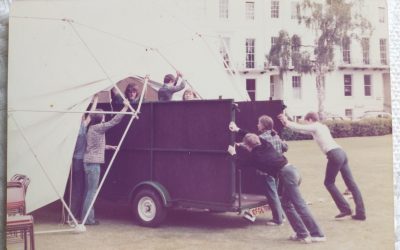At the weekend I went to watch a tango club at which an old friend of mine teaches. I know nothing about tango, though I’ve been to a few Argentine tango shows in London, and recently I had a lot of fun playing in a late-night performance of some Piazzolla tangos.
After watching the tango couples for a while, I asked my friend, ‘What is the very first move that you learn when you begin to learn tango?’ He nodded towards the dance floor and replied, ‘Shall I show you?’ ‘No thank you!’ I squeaked fearfully. He smiled and said, ‘I’m going to ask you again, and this time you’re going to give a different answer. …Shall I show you?’ ‘Yes please’, I squeaked fearfully.
We got up on the dance floor (me in my stout shoes) and he explained that the simplest thing, as well as the most refined, is ‘The Walk’, where a couple ‘in ballroom hold’ simply walks to the rhythm of the music, the man moving forward, the woman moving backwards. The man leads and the woman follows, but there should be no pushing, dragging, clutching, or encroaching on the other’s space when not appropriate. The two dancers should be perfectly balanced, aware of one another’s weight and momentum, responsive to directional changes, their heads ‘floating’, their feet gliding on the floor.
‘Walking’ fluently around the dance floor to the music without overbalancing, being pushed or pulled is not easy (especially if you’re the one going backwards). I learned that ‘the walk’ is considered the heart of the matter. I tried it for a while and began to get an idea of how enjoyable it might be. My friend told me that an Argentine tango couple, coming to the club recently to have their expertise assessed, chose to devote most of their demonstration to ‘the walk’, emphasising their ability to make the simplest, loveliest line. It reminded me of that story of the mediaeval painter Giotto, who, when asked by an emissary of the Pope for a demonstration of his skill, responded by taking his paintbrush and drawing a perfect free-hand circle. The simplest thing, but also the best proof of mastery.




Lovely!
A certain recording that I have heard actually makes the 2nd Movement of Schubert’s E Flat Piano Trio sound like a tango… thank goodness that you didn’t take that approach!